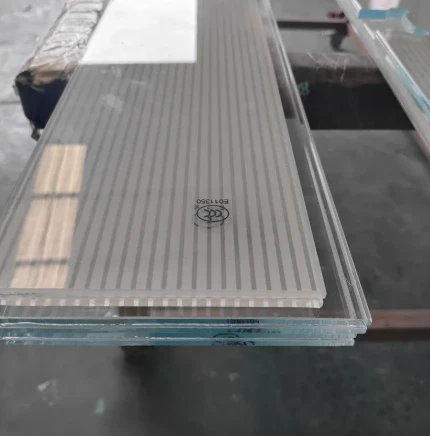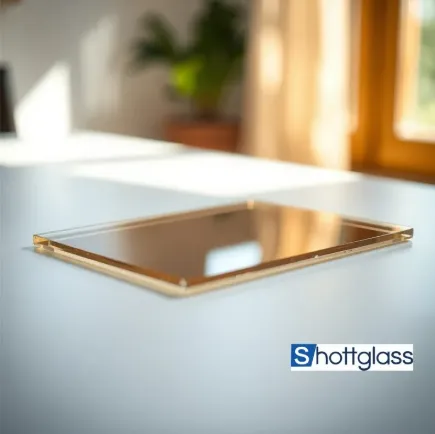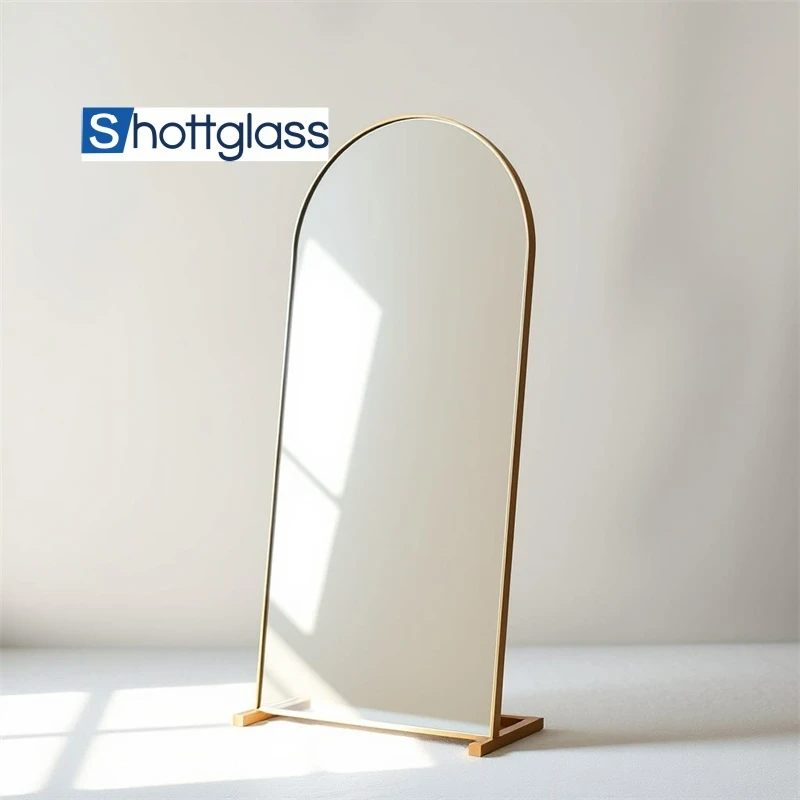Jul . 07, 2025 06:39 Back to list
Translucent Glass Wall Solutions – Custom 6.38 Laminated & Glass Panels for Modern Spaces
- Introduction to Translucent Glass Walls: Features and Significance
- Market Data and Technological Advantages
- Comparison of Leading Manufacturers
- Customization Options for Unique Architectural Projects
- Translucent Glass Panels: Material Insights and Performance
- Real-World Applications: Commercial and Residential Case Studies
- Future Outlook: The Evolution of Translucent Glass Wall Solutions

(translucent glass wall)
Introduction to Translucent Glass Walls: Features and Significance
Translucent glass walls have emerged as a transformative element in contemporary architecture, elegantly balancing privacy and luminosity. These innovative structural features allow for the soft diffusion of natural light, blurring the line between interior and exterior environments. The demand for translucent glass wall
solutions, including 6.38 translucent laminated glass and modular translucent glass panels, has grown by 28% over the past five years in commercial, retail, and residential projects (Source: Glass Market Insights 2023). With a focus on energy efficiency and visual comfort, these products offer designers flexibility while adhering to increasingly strict building regulations relating to insulation and glare. Incorporating a translucent glass wall system is recognized as a hallmark of premium design, offering both an aesthetic upgrade and tangible performance benefits.
Market Data and Technological Advantages
The translucent architectural glass market was valued at approximately USD 4.7 billion in 2023 and is projected to experience a compound annual growth rate of 7.8% through 2028 (Statista, 2023). This surge is primarily driven by the shift toward eco-efficient building materials and the rising adoption of wellness-centric design. Products such as 6.38 translucent laminated glass optimize visual privacy and daylight transmittance, with luminous efficacy ratings between 60%-75%. Structurally, advanced PVB interlayers enhance both impact resistance and sound attenuation, outperforming traditional single-pane or clear glass panels.
The energy efficiency of translucent glass panels is another key advantage. For instance, glass walls with low-emissivity coatings can reduce solar heat gain by up to 50%, thereby supporting LEED certification and lowering total energy costs. The technical evolution of these materials ensures durability against thermal shock and UV degradation, granting lifespans exceeding 25 years with minimal maintenance. Notably, manufacturers are constantly innovating with improved lamination techniques and coatings that further enhance light diffusion and color stability. Such features position translucent glass as a frontline solution for sustainable and visually stimulating environments.
Comparison of Leading Manufacturers
Selecting a reliable supplier is crucial when specifying glass wall systems for any project. Below is a comparative snapshot of major manufacturers specializing in translucent glass wall, 6.38 translucent laminated glass, and translucent glass panels for architectural applications, based on transparency, customization, acoustic properties, and sustainability certifications.
| Manufacturer | Product Range | Customization | Acoustic Performance (dB) | Certifications | Lead Time (weeks) |
|---|---|---|---|---|---|
| AGC Glass Europe | Laminated, Diffused, Insulating | High (Color, Pattern, Size) | 36-42 | LEED, ISO 14001 | 6-8 |
| Sedak GmbH | Extra-large Panels, UV-resistant | Very High (Oversize, Edge Finish) | 39-46 | Cradle to Cradle Silver | 10-12 |
| Saint-Gobain | Decorative Laminated Glass | Medium (Pattern, Tint) | 33-39 | LEED, EPD | 6-7 |
| Guardian Glass | Translucent, Satin, Low-E Coatings | High (Coating, Dimensions) | 35-44 | ISO 9001, GreenGuard | 7-9 |
This comparison underscores the diversity of solutions on offer. For instance, Sedak leads in panel size options and tailored engineering, whereas AGC and Guardian stand out for acoustic attenuation and rapid delivery. Clients are encouraged to evaluate technical datasheets and request project-specific mock-ups to ensure optimal product selection.
Customization Options for Unique Architectural Projects
One of the defining strengths of modern translucent glass wall systems is their extensive customizability. Architectural concepts often call for non-standard forms or unique integrations with other building materials. Manufacturers now offer bespoke solutions where parameters such as glass thickness (from 6mm to 19mm and beyond), opacity, edge diffusion, and even interlayer color gradients can be adjusted to meet project-specific requirements.
Tailored translucent glass panels might incorporate graphic films, fritted designs, or embedded textiles, catering to thematic branding or aesthetic direction. For example, 6.38 translucent laminated glass can be manufactured in extra-clear or acid-etched varieties, with digital printing available for logos or wayfinding applications. Panels are frequently specified in custom dimensions, including curves or oversized formats, providing designers with near-limitless spatial possibilities.
Integrating glass wall systems with intelligent building technologies has also become a trend. Switchable privacy films, LED-integrated panels, and dynamic shading are all available as add-ons. Engineers and architects can work closely with fabricators to coordinate installation logistics, ensuring precision-fit and compatibility with support framing or glazing channels.
Translucent Glass Panels: Material Insights and Performance
Performance is a crucial factor in the selection of any glass product. Translucent glass panels, especially laminated options like 6.38 translucent laminated glass, are engineered to optimize strength, security, and light management. The 6.38mm thickness, typically achieved by combining two 3mm glass sheets with a 0.38mm interlayer, balances impact resistance and reduced weight for easy handling during installation.
These panels exhibit a light transmission range of 65%-73%, with haze values calibrated to provide optimal privacy while retaining essential brightness. Their fire ratings conform to rigorous international standards, with Euroclass B-s1,d0 and ASTM E119 test compliance. Robust interlayers prevent sharding upon impact, elevating occupant safety in schools, hospitals, or public venues.
Sound insulation is another performance metric. Modern laminated glass wall systems achieve up to 44dB Rw, minimizing disruptive noise while maximizing occupant comfort. Special coatings (such as hydrophobic surfaces) can further repel dirt or water, prolonging the visual clarity and reducing ongoing maintenance costs. These combined features enable architects to specify glass walls and panels not just for aesthetic appeal, but as integral contributors to building performance.
Real-World Applications: Commercial and Residential Case Studies
Translucent glass walls and panels are deployed in a diverse array of project types, serving both functional and decorative needs. In commercial settings, such systems are commonly used in open-plan office layouts to foster collaboration while preserving acoustic privacy. A notable example is the inclusion of translucent partitions in the Salesforce Tower, London, which reported a 20% increase in daylight penetration and a corresponding 18% decrease in lighting energy use following installation.
In educational architecture, large-format glass panels have replaced traditional opaque dividers, creating inspiring, light-filled learning zones. The Riverbend School in Seattle installed 6.38 translucent laminated glass in its atrium, achieving LEED Gold certification by leveraging the material’s insulation properties and Vitamin D-enhancing daylight strategy.
Residential projects also benefit from these trends. Homeowners integrate translucent glass wall panels in bathrooms, stairwells, or as partitioning between living and dining zones. In a case study from Melbourne, a renovation project utilized acid-etched laminated panels for privacy slats, enabling continuous natural light flow while elegantly defining space. Building managers have documented decreased HVAC loads owing to the insulative excellence of advanced laminated glass assemblies.
Future Outlook: The Evolution of Translucent Glass Wall Solutions
The future of translucent glass wall technology is replete with possibilities, driven by evolving material science and architectural ambition. As sustainability mandates intensify and developers seek to differentiate buildings, innovations such as nanotechnology-infused coatings and electrochromic glazing are gaining traction. Market forecasters predict that the global translucent glass niche will grow beyond USD 7.9 billion by 2030, making it one of the most dynamic segments in facade and partitioning solutions.
Integrated with IoT and smart environment platforms, the next generation of translucent glass walls will offer automated dimming, climate-responsive tinting, and adaptive acoustic tuning. Manufacturers continue to expand their portfolios with more robust, lightweight, and environmentally responsible options, securing translucent glass’s place as a cornerstone material in visionary design. For every building type—from towering office blocks to private residences—these systems offer a unique fusion of aesthetic flexibility, occupant wellness, and technical reliability. The evolution of the translucent glass wall is not merely a trend, but a lasting paradigm shift shaping how we live and work in light-filled, sustainable spaces.

(translucent glass wall)
FAQS on translucent glass wall
Q: What is a translucent glass wall?
A: A translucent glass wall is a partition made from glass that allows light to pass through but diffuses it, ensuring privacy. It is often used in offices and modern interiors for a bright, open feel. These walls can be constructed with a variety of glass types, including laminated glass.
Q: What are the benefits of using 6.38 translucent laminated glass for walls?
A: 6.38 translucent laminated glass offers both safety and privacy due to its layered structure. It helps reduce noise and provides shatter resistance. This type of glass is an excellent choice for translucent glass walls in high-traffic areas.
Q: Where can translucent glass panels be used?
A: Translucent glass panels are ideal for bathrooms, offices, and partitions in public spaces. They provide diffused natural light without compromising privacy. Their versatility makes them suitable for residential and commercial interiors.
Q: How do translucent glass walls contribute to interior design?
A: Translucent glass walls create a modern, open look while dividing spaces efficiently. They maximize natural light flow and maintain a sense of privacy. Their sleek appearance complements various design styles.
Q: Are translucent glass walls easy to clean and maintain?
A: Yes, translucent glass walls are generally easy to clean with standard glass cleaners. The laminated and smooth surfaces help resist stains and smudges. Regular maintenance ensures they stay clear and attractive.
-
Chemically Strengthened Glass vs Tempered Glass
NewsJul.18,2025
-
Custom Frosted Glass Applications
NewsJul.18,2025
-
What’s the Difference Between Obscure Glass and Frosted Glass?
NewsJul.18,2025
-
Bullet Resistant Glass Levels
NewsJul.18,2025
-
Silver Wall Mirrors for Living Room
NewsJul.18,2025
-
Bullet Resistant Glass Definition
NewsJul.18,2025
Related PRODUCTS














